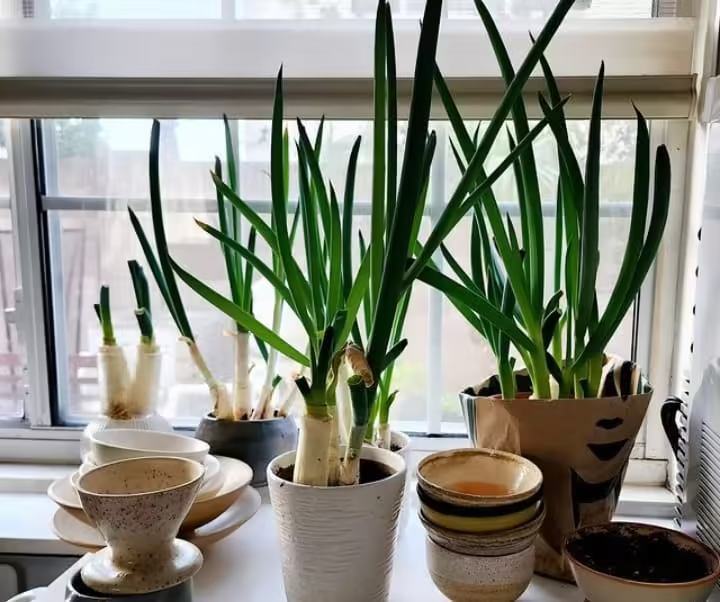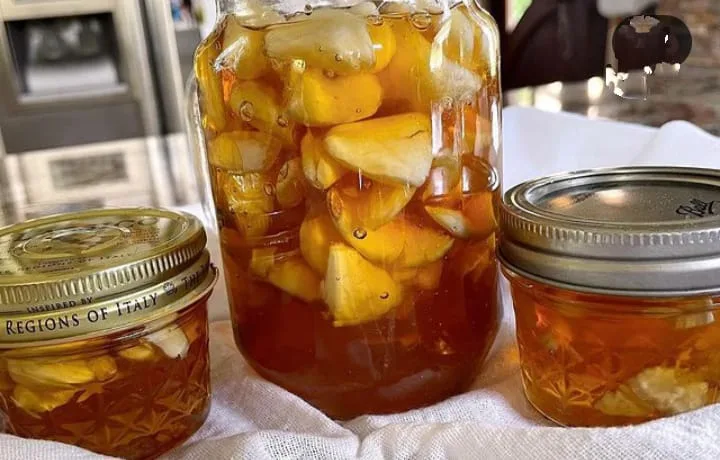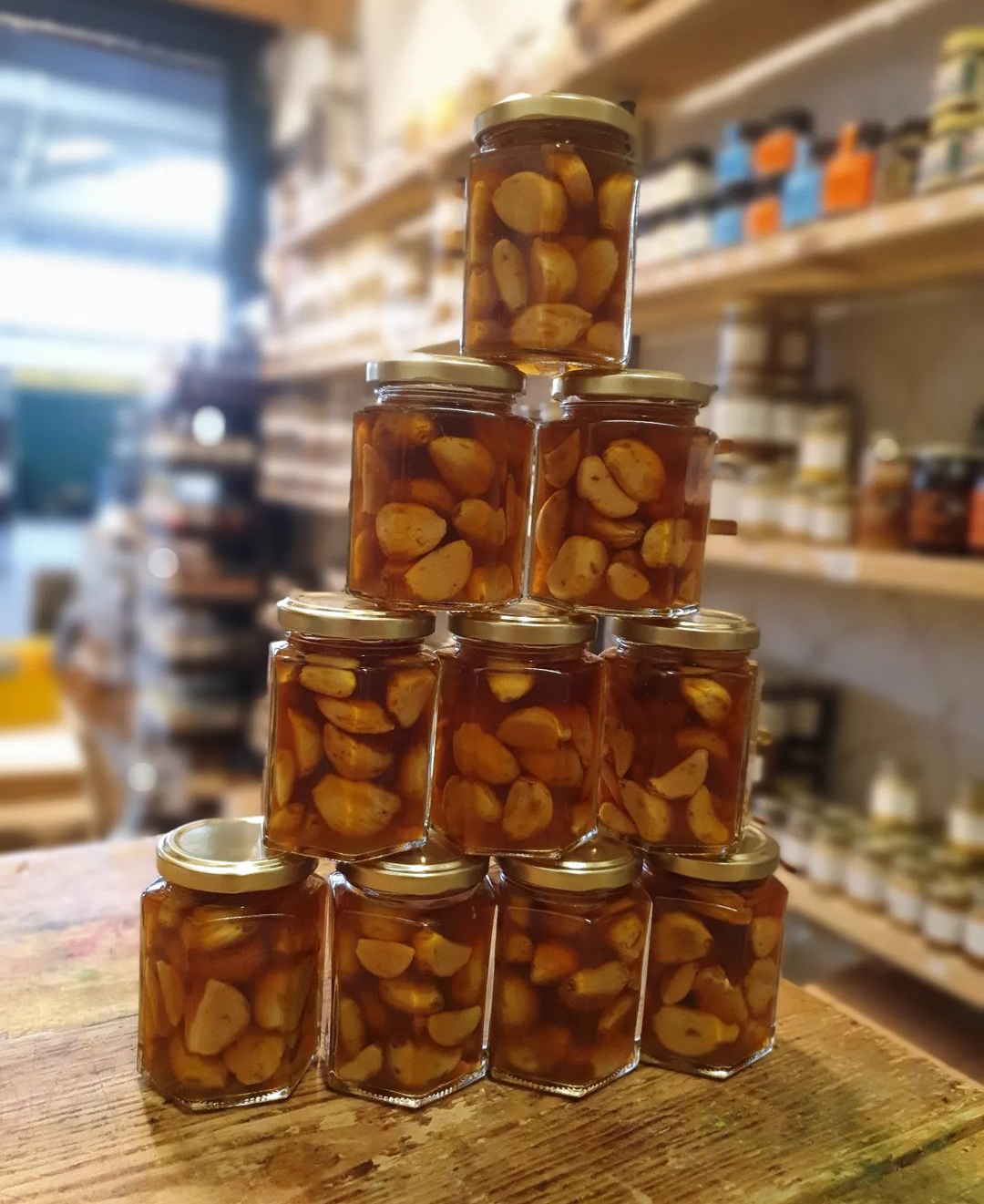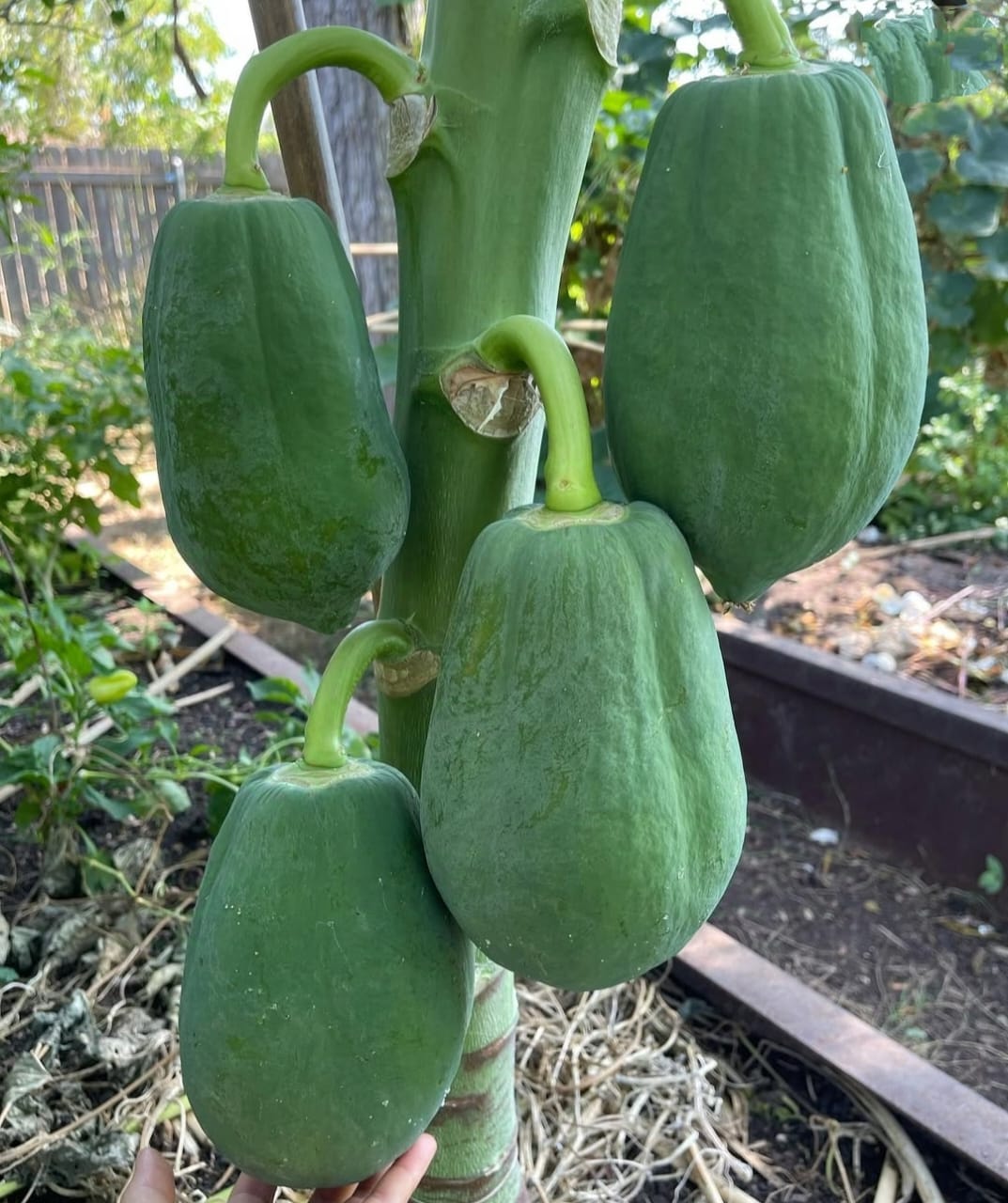Green onions, often called spring onions or scallions are a type of vegetable that belong to the allium family, which also contains leeks, onions and garlic. It is composed of two primary components and has a pleasant, fresh flavor:
White Bulb The green onion’s tiny, somewhat rounded base, which is more flavorful than the green tips.
The green, long, slender stalks which taste softer and more delicate.
Either portion can be eaten raw in salads, cooked in different recipes or used as a garnish. Due to their mild onion flavor and crisp texture, green onions are a versatile ingredient that are frequently utilized in cuisines all over the world. Because of their mild taste and adaptability green onions or Allium fistulosum are a common ingredient in a wide variety of recipes. Here is a closer look at their traits and applications.
Similar to a mild onion, the white portion of the green onion has a harsher, more pungent flavor.
The green tops impart a fresh, slightly peppery flavor and are gentler.
The white bulb has a crispy, crisp texture. Though soft the green tops retain a pleasing bite. Green onions have many health advantages and are minimal in calories.
They are an excellent source of K, C and A vitamins. They are packed with vital nutrients, including iron, calcium and potassium. Antioxidants found in green onions aid in the battle against oxidative stress.
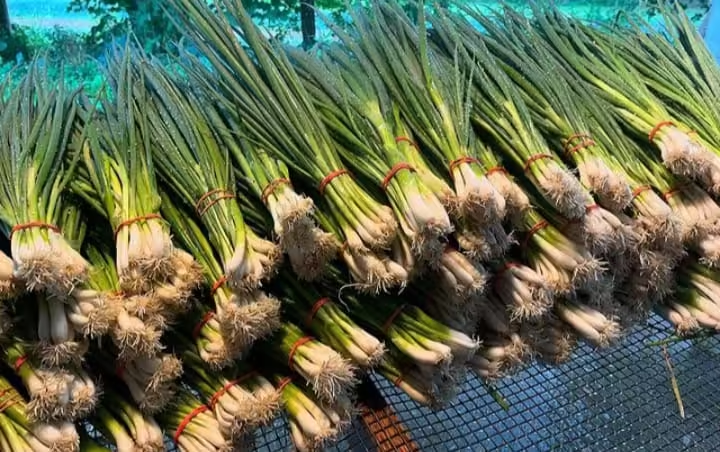
Uses in Cooking
Raw: Sliced green onions give salads a crisp new flavor.
They are frequently added as a colorful and flavorful garnish to soups, stews and main courses.
They can be used for flavor to guacamole, salsas and other dips.
When cooked, they offer a wonderful flavor to stir fries without taking center stage.
To add a hint of onion flavor to soups and stews use green onions
They can be added to savory baked products such as muffins or biscuits.
To give salads and sandwiches a zesty edge pickled green onions can be used.
Cultivating Green Onions
Growing green onions is not too difficult; they may be planted directly in the ground and will do well in a sunny position.
Indoors they can also be cultivated in pots or other containers. All you have to do is plant the roots in soil or water and they will keep growing.
Storage
One way to keep green onions is
Within the Freezer To keep them fresher longer, store them in a plastic bag or container. They often endure for a week or more.
In the Water To keep the roots fresh and encourage further growth place them in a glass of water on a windowsill. Regularly change the water.
Green onions, with their mild, agreeable flavor and adaptability are a staple in many cuisines, including American, Asian and Mediterranean. They are delicious when added to a variety of meals, whether they are cooked, raw or pickled.
Green Onion Plant
Mild onion flavor makes green onions a versatile and easy to-grow plant. They are composed of tall, green tips and a white bulb that are both tasty.
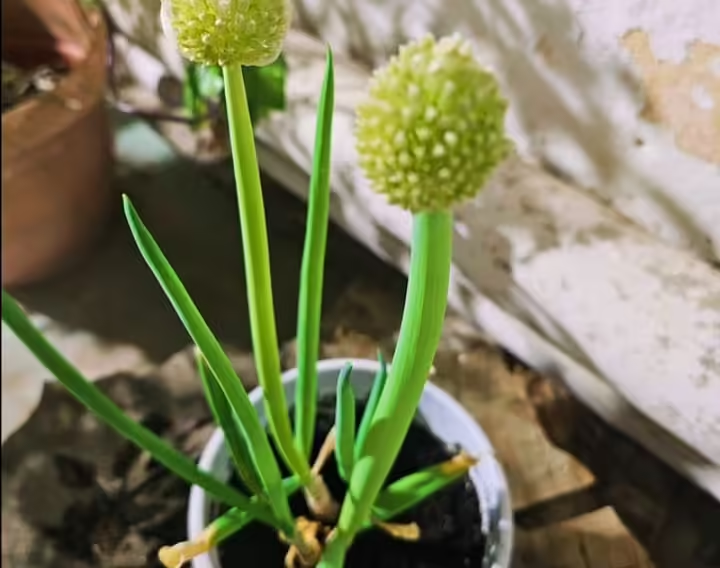
How to Grow Green Onions
They do best in sunny areas with soil that drains properly. Containers can be used under grow lights or on a windowsill by indoor growers.
Planting: Place seeds 1 inch apart and 1/4 inch deep. When planting sets or transplants, be sure to place them 1 inch deep and 2-4 inches apart.
Care: Keep the space weed free, fertilize with a balanced mix or compost and maintain constant soil moisture. Although green onions are often pest resistant, keep an eye out for fungi and aphids.
Care: Keep the space weed-free, fertilize with a balanced mix or compost and maintain constant soil moisture. Although green onions are often pest resistant keep an eye out for fungi and aphids.
Harvesting: When green onions reach the right size, they can be harvested, which takes about 6 to 8 weeks. Gently lift them with a garden fork.
Indoor Vegetable Cultivation
Container: Use high quality potting mix and pots with enough drainage.
Light: Make sure they get an adequate amount of light either from grow lights or natural sources.
Watering: Prevent waterlogging and maintain a wet soil.
Green onions are a constant source of harvest and taste that can be added to a variety of meals. They are a sensible option for indoor and outdoor gardening due to their simplicity of growth and maintenance.
Green Onion Substitute
If you are in search of a substitute for green onions think about these options
The chives is an excellent addition to raw foods or as a garnish. Their delicate texture makes them a great option for a subdued onion flavor addition.
Shallots: When a more subtle flavor is preferred shallots having a gentler and more nuanced flavor than green onions are a great addition to salads, sauces and other dishes.
Leeks are an excellent addition to soups and stews because of their mild, sweet flavor. For optimal results, use the light green and white sections.
Red or yellow onions are useful in prepared foods and have a richer flavor. Chop them finely so they don’t overshadow the dish.
Spring Onions: More flavorful than green onions, yet similar in appearance. You can use them raw or cooked.
Select the alternative according to the degree of taste and texture your food requires.
Chives vs green onion
As vegetables and herbs, chives are members of the allium family (more particularly the delicate herb group). Chives resemble thin straws or grass blades; they are long, slender, hollow green tubes. There is a distinct oniony-grassy flavor to chives. Because they are so fragile chives are usually added at the end of cooking to offer a flash of green and a bite of onion or served raw as a garnish. Recipes with eggs, potatoes, chicken, fish and shellfish go nicely with chives.
Green onions, often known as scallions and chives are not the same thing, even though they both have a mild onion flavor. Compared to green onions, chives are more delicate, smaller and lack an edible bulb at the bottom. The flavor of chives is substantially milder than that of green onions. Although green onions are robust enough to be cooked through like when sautéed in stir fries or grilled, both can be used raw. Because they are more fragile, chives work best when added very near the finish of cooking or when used raw as a garnish.
Green Onion Health Benefits
Green onions provide the following primary health benefits
1. Balancing blood pressure
These onions can encourage arterial vasodilation which relaxes the arteries and improves blood circulation because they contain potassium. This may aid in controlling blood pressure. Moreover the potassium included in these onions facilitates the excretion of surplus salt from the bloodstream through urine.

2. Support in weight loss
Due to their high fiber content which prolongs the time it takes for meals to be processed in the stomach, these onions help people lose weight. This prevents overeating by keeping you satisfied between meals.
Green onions should however be a part of a balanced diet and an active, healthy lifestyle to guarantee weight loss.
3. Preventing aging too soon
Scallions contain the minerals and carotenoids with antioxidant qualities beta carotene, vitamin A, lutein and zeaxanthin. Through their ability to shield the skin from UV radiation and free radical damage they aid in the prevention of premature aging. This can stop drooping skin and wrinkles from developing.
Owing to their high vitamin C content green onions are an aromatic plant that may aid in the production of collagen a crucial protein that keeps skin supple and elastic.
4. Handling constipation.
These onions high fiber content might encourage regular bowel motions and provide stool more volume. This encourages frequent evacuation and aids in the fight against constipation. Look into additional foods, that are naturally laxative that you might eat to relieve constipation.
5. Reducing cholesterol from LDL
Vitamin C, flavonoids, saponins, and beta-carotene are just a few of the bioactive chemicals and elements that are abundant in green onions and have antioxidant properties. As a result, they prevent fat cells from oxidizing and contribute to a drop in blood LDL cholesterol levels.
Scallions are therefore a fantastic way to help stop the development of high cholesterol related conditions like atherosclerosis, angina, heart attacks and strokes.
6. Preserving eye health
These are the carotenoids that build up in the retina and shield the eyes from UV radiation from the sun and blue light from electronics like tablets, computers and cell phones.
Green onions therefore aid in the prevention of cataracts and age related macular degeneration a condition that worsens over time and can result in blindness.
7. Controlling diabetes
Because of their high fiber content, these onions reduce how quickly carbohydrates are absorbed from meals. This can control blood sugar levels assisting in the prevention of diabetes and insulin resistance.
8. Increasing defenses against illness
Because they are high in flavonoids, beta-carotene, and vitamin C, green onions help to fortify and enhance the immune system’s ability to combat germs, fungus, and viruses. Learn about other foods that help strengthen your immune system.
9. Guarding against osteoporosis
Additionally high in vitamin K, which is required for the synthesis of the protein osteocalcin, which helps to deposit calcium in the bones is found in green onions. Thus, eating these onions can help to preserve bone health and stop osteoporosis from developing.
But getting enough calcium from your diet is also necessary for vitamin K to support bone health.
10. Taking care of anemia
Because these onions are high in vitamin C, which is necessary for absorbing iron from diet and aiding in the production of hemoglobin a protein that carries oxygen throughout the body and is typically deficient in anemia they help prevent anemia.
Related Post: What is Clove of Garlic: Its Benefits and Nutrition facts of Clove of Garlic
For fitness freaks: This is for you
Frequently Asked Questions
What Green vs spring onion difference?
These are both same and are immature onions. Spring onions are available in bunches and have a spherical, white bulb with long stalks. Try slicing spring onions thinly and adding them to soups, stews and casseroles.
How long do green onions last?
At least 1 to 2 weeks if stored properly in a fridge.
Do these onions cause gas?
Like other onions, they may cause gas in some people.

Ankush Kumar is a professional content writer and the founder of Healthnick.com. He is a health and wellness enthusiast with a deep interest in nutrition, fitness and holistic living. Harish is committed to delivering research-based insights on various health topics. He enjoys exploring new trends in health, experimenting with nutritious recipes, and staying active.
